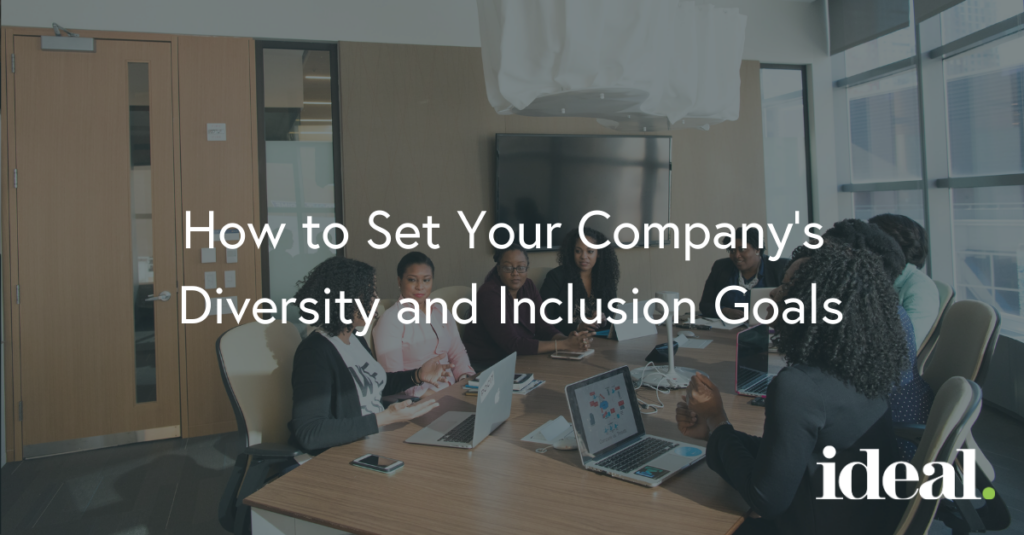
Human resources teams have been put to the task of creating new processes and balanced diversity and inclusion goals in the workplace. Tackling workplace injustice is not an overnight task or a one-time initiative, and organizations are turning to DEI technology for reduced biased insights.
Glassdoor reviews about diversity and racial justice have risen 63 percent since the Black Lives Matter movement took hold of the conversation in May 2020. Companies are now expected to acknowledge the realities of systemic racism, and have long-term goals for diversity and more importantly, inclusion.
Start by assessing your data
Confronting workplace vulnerabilities is the first step to understanding what areas need work. Without the ability to measure present data and track future people analytics, your organization lacks the ability to measure success and improvements within underrepresented groups.
Here are some examples of the kinds of data AI can help you uncover.
Diversity Intelligence
Measure the different demographics of your workforce, including age, race, gender, educational background, disabilities, and more. More employers have also started collecting data around gender identity and sexual orientation to better strengthen the support provided to these communities.
Start uncovering the data that your organization already stores to understand the basics of your workforce. This could be stored in your ATS system or collected during employee surveys. For most mid-sized to large companies, this data already exists in the form of raw data, which can be further enriched by leveraging AI.
Equity Intelligence
Account for the intersection between people groups and demographics. Equity stands for equal access to opportunities and resources and is especially important for groups that might have been excluded. For example:
- How many female candidates did we attract to the job?
- If we attracted 50% male and 50% female candidates to the job, why were 5% of the hires women?
Artificial intelligence can help uncover areas of unconscious bias across the employee lifecycle, from which applicants are being overlooked for job opportunities, to which employees have inequitable upskilling and promotion opportunities.
Often company statistics can be misleading with percentages that sound diverse, while still sporting a homogenous C-suite of executives that are predominantly white and male. A Stanford Graduate School of Business study found that diversity among Fortune 500 CEOs is still severely lacking and top to bottom issues can persist.
Inclusion Intelligence
The amount of data your organization has to offer is staggering. Spanning across the entire employee lifecycle, AI highlights data points and makes clear connections to show the underrepresented groups in your workforce that require attention.
Inclusion is the key to helping your efforts in diversity succeed. People’s feeling of belonging is equally important to the act of simply hiring a more diverse workforce. It’s important to pay attention to cultural differences and areas that need specialized support, such as working parents and fasting holidays.
Employee surveys are a good way to better understand whether people feel welcomed and valued. Consider how NPS surveys offer companies insight into what is working well and what isn’t.
Data such as working mothers feeling stressed about 5 pm deadlines so managers can better accommodate flexible timelines around the working day.
This intersectional approach and understanding of these insights will empower your diversity officers and human resources department to create the best initiatives for your organization.

Create your benchmarks and goals
With the support of DEI technology, you’ve now uncovered an array of data points and have a better understanding of your workforce’s demographics and key people groups. How can you now fairly attract, support, and retain employees from all groups?
Make diversity, equity, and inclusion cornerstones of your organization. AI provides the supporting evidence and intelligence to help your human resources team improve talent management across the entire employee lifecycle.
Your industry benchmarks
See what areas your industry as a whole needs to improve on. This is a good starting point for your organization’s overall strategy.
Your employee lifecycle
Use artificial intelligence to track how your demographic statistics change as employees proceed from start to end of their time at your company. How about which candidates progress from interviews to offers for promotions?
These reports may reveal opportunities for more equitable decision making.
Your leadership team
Hold your organization accountable to monitor and develop inclusive initiatives for underrepresented groups. Will a diversity officer or your human resources team be responsible for the continued attention to your goals?
Set up a regular data reporting schedule to track your DEI campaigns and initiatives. Automating this process sets your organization up for the long-term success of these campaigns.
Set an example as a workplace leader and ally
A Glassdoor survey revealed that about three in five U.S. employees have witnessed or experienced discrimination in the workplace in relation to age, race, gender, or LGBTQ+ identity. While many workplaces have employee discrimination training on an annual basis, it’s not enough for the individual employee to simply be educated for awareness.
Transparency is key for everyone
Share your process with your workforce. Employees will appreciate and show loyalty to organizations that show that they are committed to taking tangible action. Data-driven intelligence minimized biased evidence and can help your company quantify fairness.
Workplace surveys for employee satisfaction
Your workplace surveys are an excellent way to better understand employee satisfaction and areas that need improvement. Transparency around data collection is important and will work in your favor when sharing with employees. These initiatives are one of the ways your organization is striving to make your workplace as equitable as possible.
Make sure to always include a “choose not to disclose” option when employees are providing personal information through surveys and be clear about how this information is being used.
Artificial intelligence can empower your human resources team to improve your organization’s diversity with measurable insights. Together, your company can work toward creating an inclusive workplace.